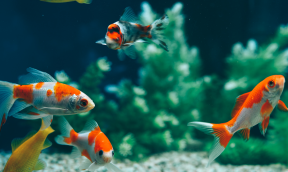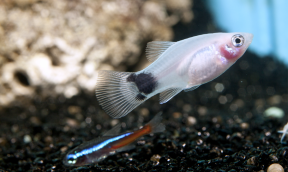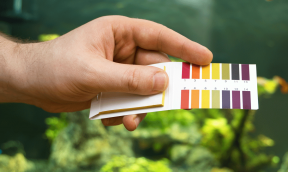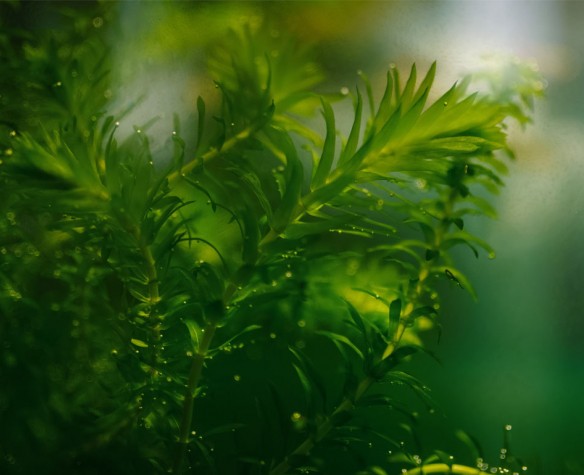
Plants
Aquatic plants are much more than a decorative item: they are the lungs of your aquarium!
During the day, they utilize carbon dioxide and transform it into oxygen, an essential element for the fish and microorganisms.
They absorb nitrates (mineral salts) and thus have a purifying role in the aquarium.
Plants are also in direct competition with algae and thus prevent them from proliferating.
They are home to a beneficial bacterial population.
They provide the fish with numerous hiding places, and are a place where some species lay their eggs, and offer real protection for fry.
Tip
Plant out your aquarium densely, with similar species. A dense flora will help you to preserve a well-balanced aquarium. We recommend that you use plants of the same species as there can sometimes be antagonism between certain species. Your pet store assistant will help you to choose the right plants.
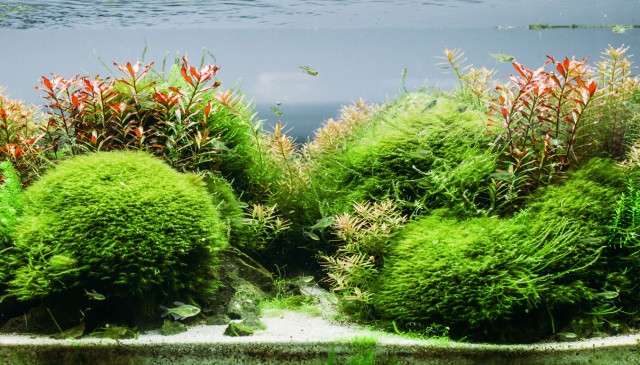
Appropriate lighting: Lighting is an essential component in plant growth. Below are a few aquarium plants classed according to their light intensity requirements.
- Intense light: Bacopa, Cabomba, Elodea, Myriophyllum, etc.
- Normal light: Aponogeton, Cryptocoryne, Echinodorus, Hygrophila, etc.
- Weak light: Cryptocoryne lingua, Microsorum pteropus (Java fern), Anubias, Vesicularia dubyana (Java moss), Vallisneria, etc.
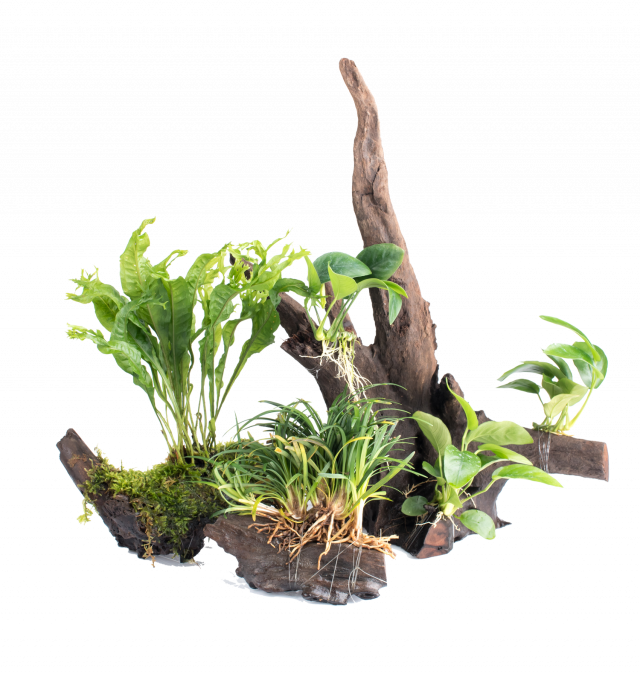
Tip
We recommend changing the tubes every 10 months. If you have several strip lights, choose different tube models with complementary light spectra. (Ask your pet retailer for advice).
Regular maintenance: The chlorophyll function involves very sophisticated chemical reactions which need trace elements and mineral salts in particular: Iron, Magnesium, Manganese, Potassium, Zinc, etc.
Note: If only one of these elements is missing, the whole mechanism shuts down, according to the law of the minimum. It is therefore essential to guarantee aquarium plants a sufficient level of trace elements and mineral salts to enable optimum growth.

